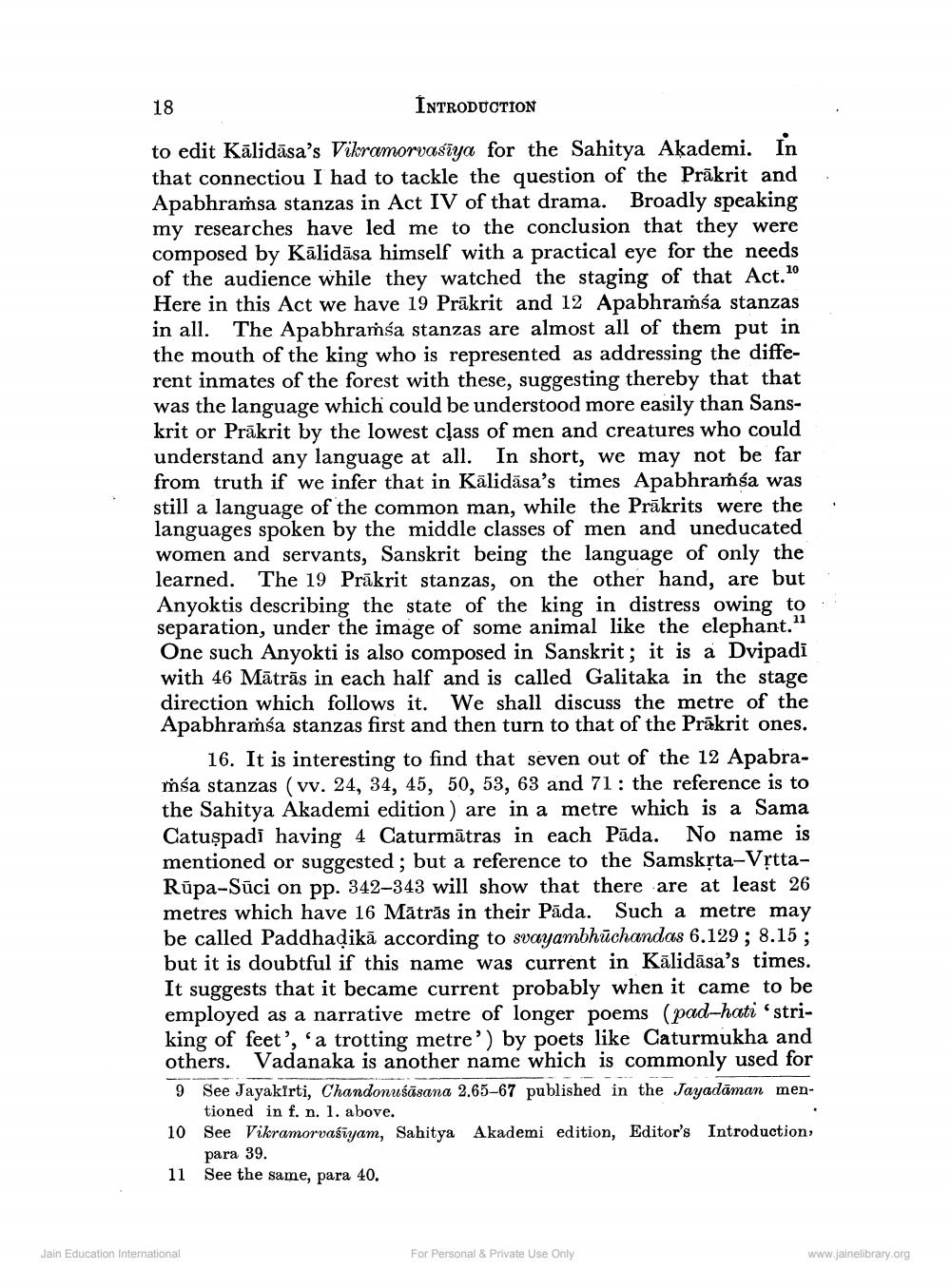________________
18
INTRODUCTION
to edit Kālidāsa's Vikramorvasiya for the Sahitya Akademi. In that connectiou I had to tackle the question of the Prākrit and Apabhraṁsa stanzas in Act IV of that drama. Broadly speaking my researches have led me to the conclusion that they were composed by Kālidāsa himself with a practical eye for the needs of the audience while they watched the staging of that Act.10 Here in this Act we have 19 Prākrit and 12 Apabhraṁsa stanzas in all. The Apabhramsa stanzas are almost all of them put in the mouth of the king who is represented as addressing the different inmates of the forest with these, suggesting thereby that that was the language which could be understood more easily than Sanskrit or Prākrit by the lowest cļass of men and creatures who could understand any language at all. In short, we may not be far from truth if we infer that in Kālidāsa's times Apabhramsa was still a language of the common man, while the Prākrits were the languages spoken by the middle classes of men and uneducated women and servants, Sanskrit being the language of only the learned. The 19 Prākrit stanzas, on the other hand, are but Anyoktis describing the state of the king in distress owing to separation, under the image of some animal like the elephant." One such Anyokti is also composed in Sanskrit; it is a Dvipadi with 46 Mātrās in each half and is called Galitaka in the stage direction which follows it. We shall discuss the metre of the Apabhramsa stanzas first and then turn to that of the Prākrit ones.
16. It is interesting to find that seven out of the 12 Apabramśa stanzas (vv. 24, 34, 45, 50, 53, 63 and 71: the reference is to the Sahitya Akademi edition) are in a metre which is a Sama Catuşpadi having 4 Caturmātras in each Pāda. No name is mentioned or suggested; but a reference to the Samskrta-VrttaRūpa-Sūci on pp. 342-343 will show that there are at least 26 metres which have 16 Mātrās in their Pāda. Such a metre may be called Paddhadikā according to svayambhūchandas 6.129; 8.15; but it is doubtful if this name was current in Kālidāsa's times. It suggests that it became current probably when it came to be employed as a narrative metre of longer poems (pad-hati striking of feet', 'a trotting metre') by poets like Caturmukha and others. Vadanaka is another name which is commonly used for 9 See Jayakirti, Chandonušāsana 2.65-67 published in the Jayadāman men
tioned in f. n. 1. above. 10 See Vikramorvasiyam, Sahitya Akademi edition, Editor's Introduction,
para 39. 11 See the same, para 40.
Jain Education International
For Personal & Private Use Only
www.jainelibrary.org




